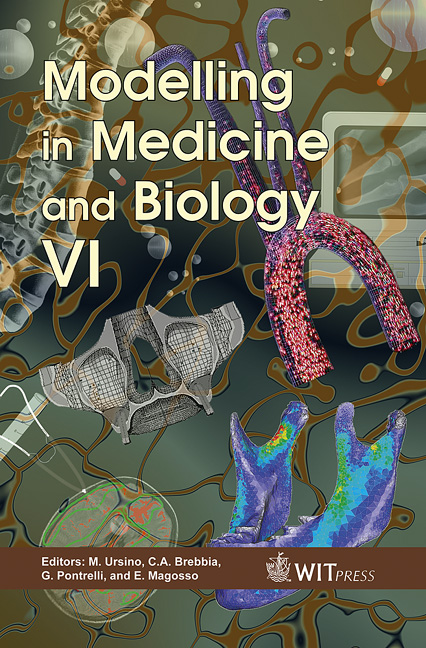A Methodological Approach For The Optimisation Of Modern Rotary Blood Pumps
Price
Free (open access)
Transaction
Volume
8
Pages
10
Published
2005
Size
1,708 kb
Paper DOI
10.2495/BIO050231
Copyright
WIT Press
Author(s)
D. Palmieri, G. Vezzani, F. Lagasco, P. Nüsser, K. Graichen & B. Wieneke
Abstract
Particle Image Velocimetry (PIV) analysis and Computational Fluid Dynamics (CFD) simulations have been performed on an innovative prototype of an implantable rotary axial pump. Numerically and experimentally estimated velocity and shear stress fields have been compared on several planes at different distances from the pump axis. An excellent agreement was generally observed in terms of mean flow velocity and viscous stresses, while the congruence of turbulent stresses was very good in some cases and less accurate in others. Further effort will be needed on both the numerical and the experimental side to better characterise near-wall flow features. Keywords: blood pump, PIV, CFD. 1 Introduction Mechanical support offered by rotary pumps is well known in cardiac diseases therapy. The range of applications spans from cardiac support prior to transplantation (Bridge to Transplant) to heart assistance to recovery (Bridge to Recovery). Rotary blood pumps are attractive in this respect because of its simplicity and small size. In particular, implantable pumps must be extremely compact, and overcome the problems of inaccessibility by highly reliable shaft seals and bearings. Technical evolution of these devices offers great perspectives for the continuous increase of the patient’s mobility and comfort. The hydrodynamic design of such devices is very complex because of the detailed characterisation of the blood flow required to identify potential areas of
Keywords
blood pump, PIV, CFD.





